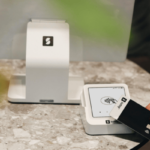Since most of us are currently trapped at home, the desire to shop online starts to creep upon us. Furthermore, the product advertisements that keep sprouting on social media do not help us to curtail our shopping frenzy.
We now have unsafe ads in addition to genuine listings, increasing the chances of online theft by a significant margin. It is common to find that the goods delivered are completely different from the one you ordered, malfunctioning, or will never arrive at your doorstep.
So, how can we prevent all this unorthodox practice and have a better, safer online buying experience? We’ll share some secrets in this article that will help you to make an online purchase safe and will discuss factors that will help you to avoid fraudulent sellers.
Tips for a Safer Online Shopping Experience
It’s simple to get used to online shopping. You just need to find what you require and, with a few clicks, you will have it delivered to your doorsteps. This ease of use also makes online shopping a risky matter. So, here are a few points on how to shop safely online.
1. Secure Connection
Check whether the site you’re shopping for is secure. Make sure the website has a secure sockets layer (SSL) certificate, which is normally displayed in the top left corner of the URL bar during surfing. If the site doesn’t have one, the bar will show a ‘Not Secure’ sign.
This is particularly important for sites that require you to enter personal or financial information. HTTPS is used instead of HTTP for websites that have an SSL certificate. Before entering any personal information, look for a padlock in the URL bar. Although the SSL certificate does not guarantee that the site is secure, it does provide an extra layer of protection against external hacking.
2. Shopping for Clothes Online
A well-known online shop locally and globally would be a wonderful choice if you wish to buy clothes from online boutiques. It’s preferable if the online shop you choose also has a physical location, as this indicates trustworthiness. If the boutique is brand new, don’t forget to look at customer reviews and return policies.
Always request a photo of the original item. If a store is defrauding customers, they may not be able to present a real-time photo or video of the product. Inquire about the cash-on-delivery option as well. Never make advance payments if the shop isn’t well-known.
3. Unknown Sites
Stay clear from unidentified websites. There are plenty of websites where you can shop on the internet, many of which have dozens of independent sellers. While a majority of them are legitimate, identifying the fraudulent ones will necessitate some investigation.
If you are browsing a website that you’ve never used before, look up their reviews to see if they have any negative feedback. Shop from websites like Amazon, AliExpress, etc. Buy only from merchants who have received the most positive reviews and are well-ranked.
4. Offers with Rock Bottom Prices
We are frequently bombarded with spam texts and emails containing low-cost offers. If the price appears to be excessively low and suspicious, it probably is. Most of these websites are operated by dishonest online merchants.
Before you click on any links in your email or texts, make sure you know where they came from. Amazon and other e-commerce sites will only send emails from their company website addresses. It’s most certainly spam if the email ID doesn’t match the merchant’s name. Also, if you want to check the legitimacy of the offer, don’t click on the link provided; instead, go directly to the company’s website to see if the offer is truly available.
5. Credit Card and Banks Statements
Many of us only look at our credit cards and bank statements at the end of each month. However, if you do a lot of shopping online, you should check your account more frequently than once a month. If you use your credit card to make international purchases, you won’t need a pin or an OTP, so be wary if they ask for one.
Make sure your credit card and bank account notifications are established to notify you as soon as your account is debited. Be vigilant if the seller requests a different method of payment, such as a wire transfer. Also, if you shop online, use your credit card rather than a debit card because a debit card is directly linked to your bank account, making it easier for scammers to access.
6. Using Free Wi-Fi
Many of us take advantage of free Wi-Fi opportunities, whether at airports or train stations. These Wi-Fi hotspots are also a hacker’s paradise because there are so many devices connected, and not all of them are safe. So use it if necessary, but avoid doing online shopping. Using 3G or 4G internet access is safe for such purposes.
You can defend yourself from hackers by using a strong antivirus or VPN, but both have their limitations. Our home Wi-Fi is usually secure if you use a strong password and don’t share it with anybody outside your house. This is why it is ideal to shop online from the comfort of your own home.
Make Your Online Shopping Decisions With Caution
Even if we are tempted to buy products online occasionally because of the convenience and exciting offers from the vendors, we should try to follow the recommendations mentioned above to stay secure and have a more joyful and less disappointing experience.
Even if traveling to physical stores is the safest method to shop, in today’s environment and with the advancement of e-commerce and finance, shopping from home appears to be the most convenient option. So it’s always better to be safe than sorry.
Happy Shopping!








